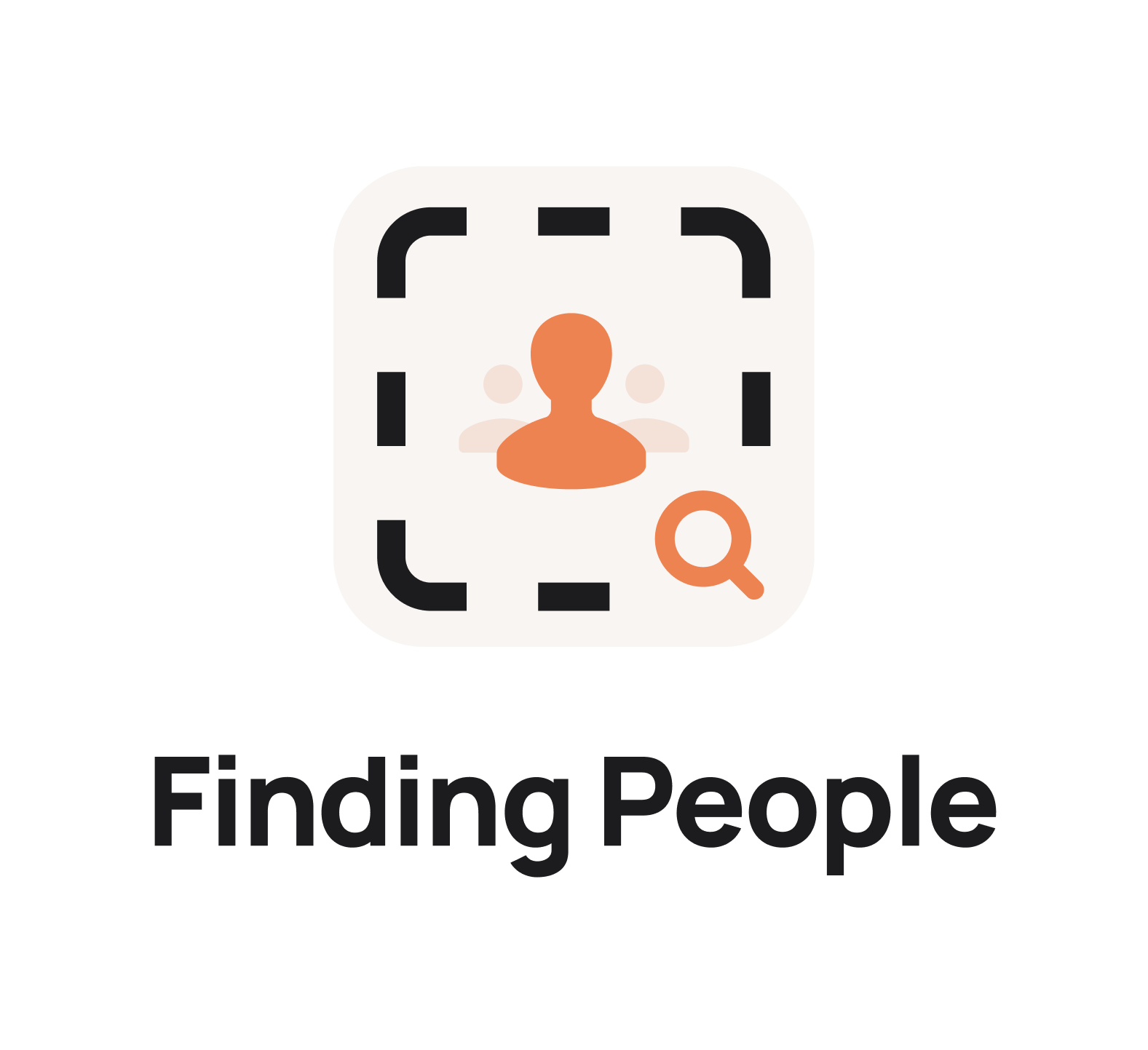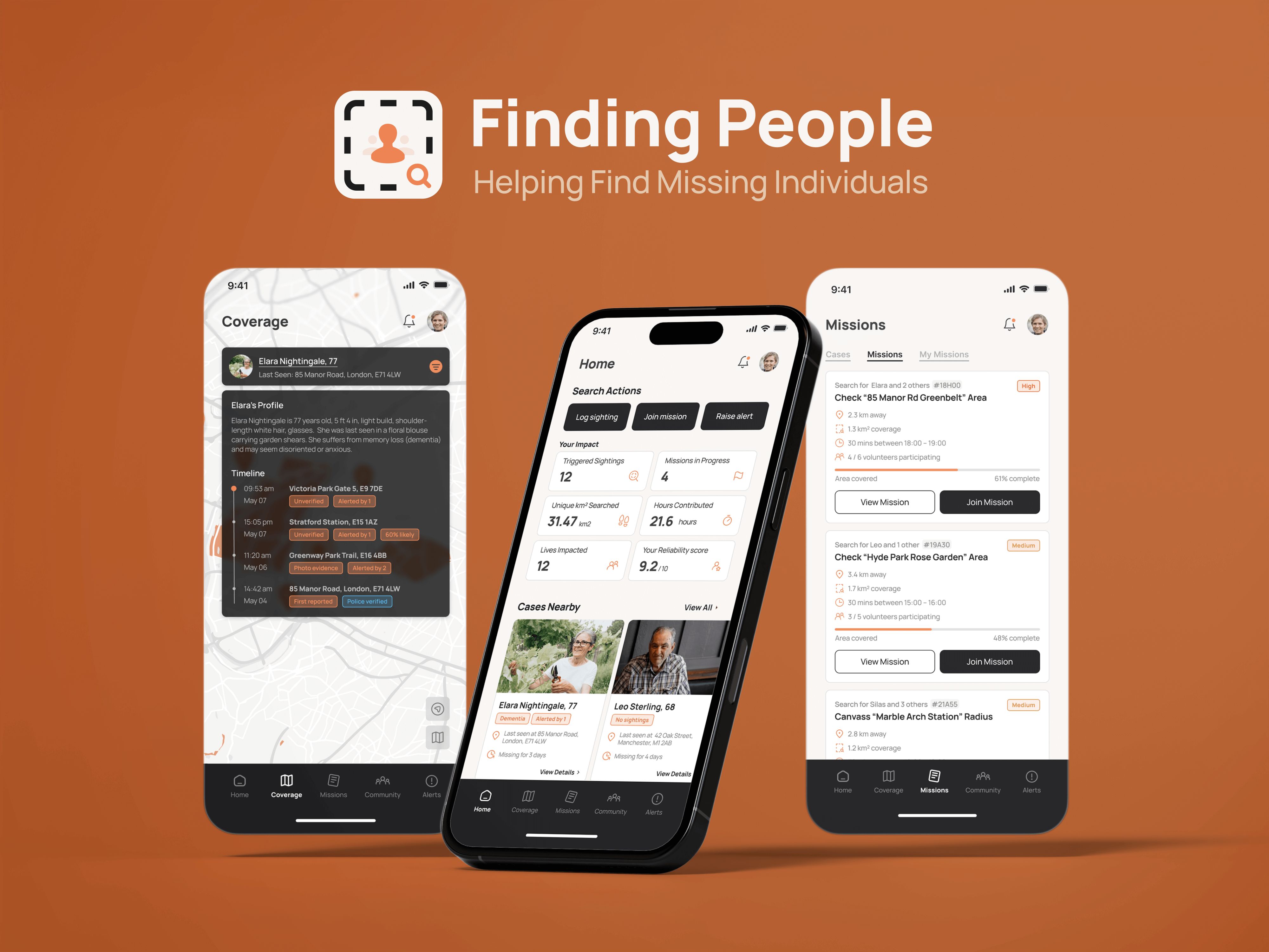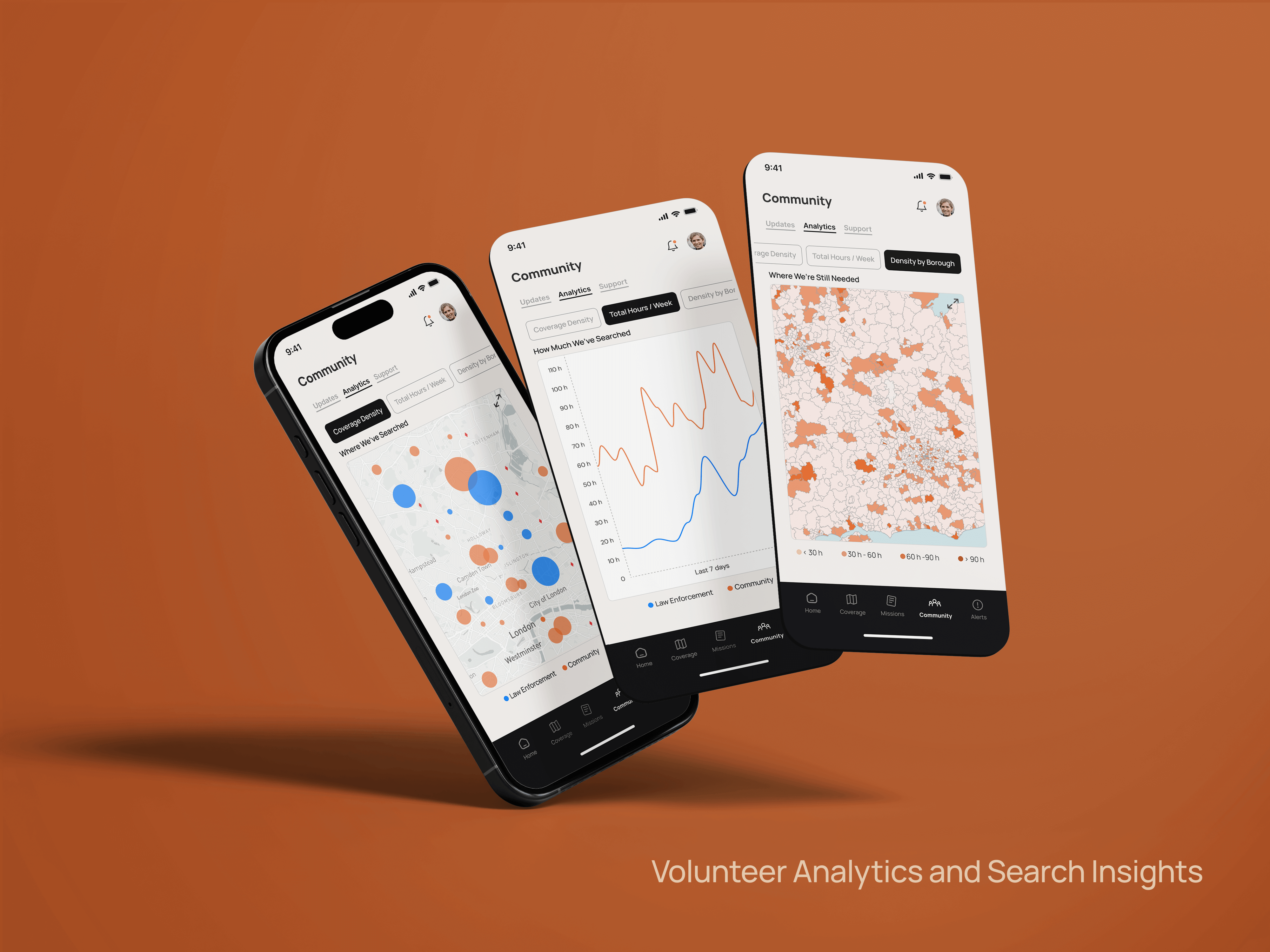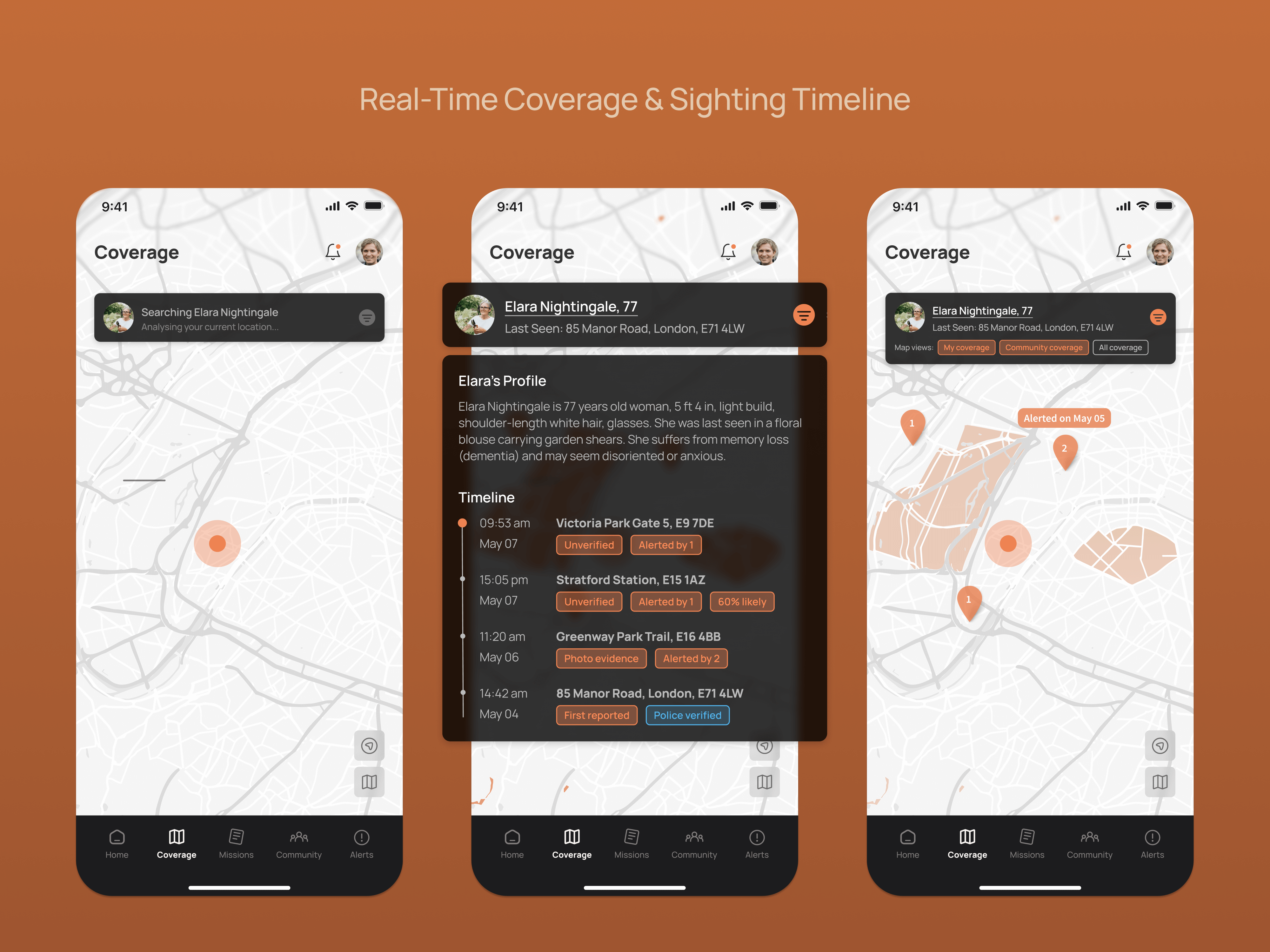
Designers
Anamol Rajbhandari
Year
2025
Category
New Talent
Country
United Kingdom
School
Goldsmiths, University of London
Teacher
Nicolas Hine

Three questions to the project team
What was the particular challenge of the project from a UX point of view?
The key UX challenge was designing a system that transforms willing volunteers into an organized search force without burdening them with complexity. The goal was to make participation as frictionless as possible while the backend handled coordination, validation, and escalation. The core feature 'Missions' was introduced to give users focused, actionable tasks without requiring knowledge of the broader strategy. Contribution dashboards helped build purpose, while visualizations like the coverage map made progress tangible. The challenge was balancing emotional urgency with clarity, ensuring users felt empowered, not overwhelmed, in high-stress situations. All interaction design was built around making it easy to help for everyone involved.
What was your personal highlight in the development process? Was there an aha!-moment, was there a low point?
The “aha!” moment was realizing how scattered volunteer efforts often are, despite the high number of people willing to help. Interviews and existing forums showed a clear willingness, but no structured system to turn intent into impact, which inspired features like Missions, confidence-based alerts, and visual dashboards to track who searched where. It created accountability and made each contribution visible. A low point came when trying to define the Community section, as early iterations felt like static blog feeds, disconnected from purpose. So the challenge was refining it into a space for safety strategies, which somewhat helped bring relevance back.
Where do you see yourself and the project in the next five years?
In the future, this project could evolve into a civic-scale coordination platform for missing persons, integrated with local councils and public safety networks. Technically, the vision includes deeper use of AI for clustering reports, privacy-conscious use of public CCTV data, and tighter collaboration with law enforcement systems. The goal is not to replace official tools, but to go hand-in-hand to complement them, filling coverage gaps and surfacing community-led intelligence. As its data grows, the platform could also serve as a knowledge base for prevention, helping identify patterns in missing person cases. Personally, the next step is to pilot the prototype to validate its real-world value and build toward scaled deployment.


